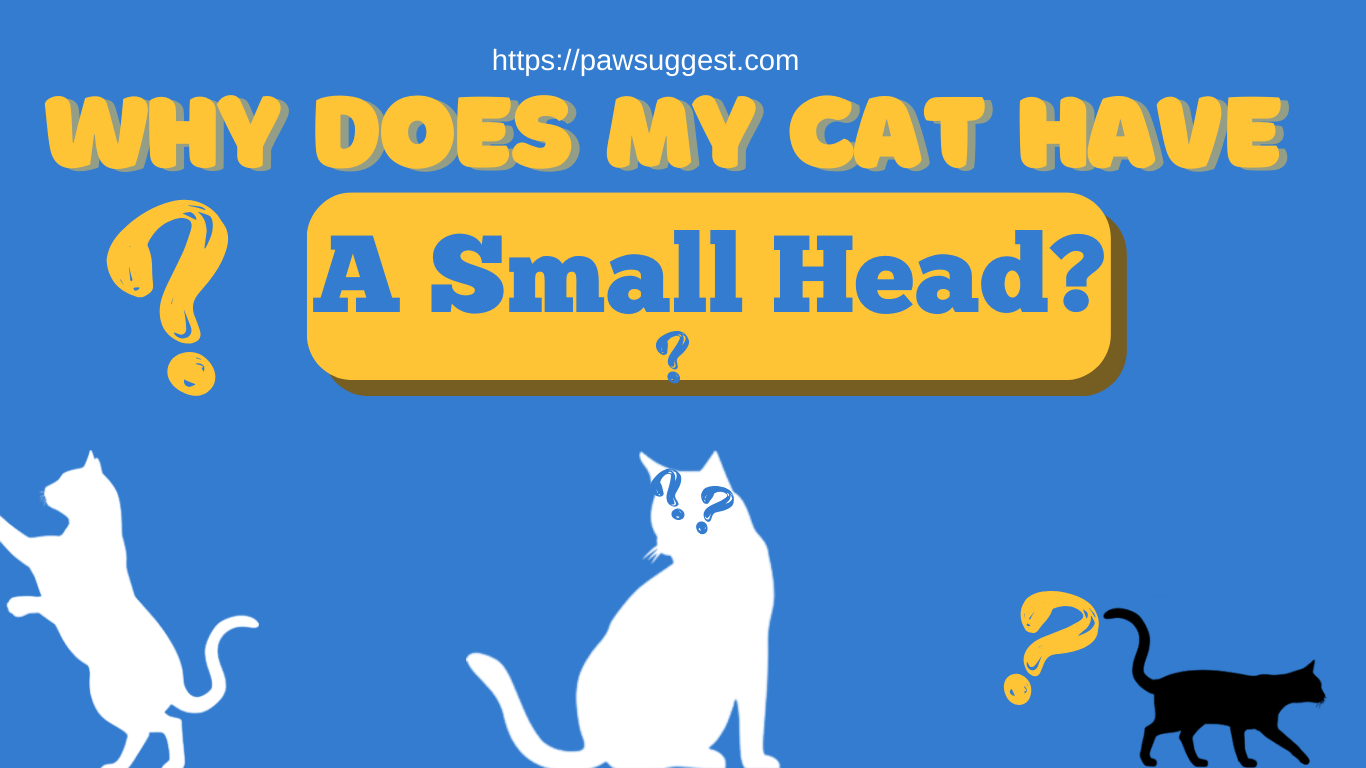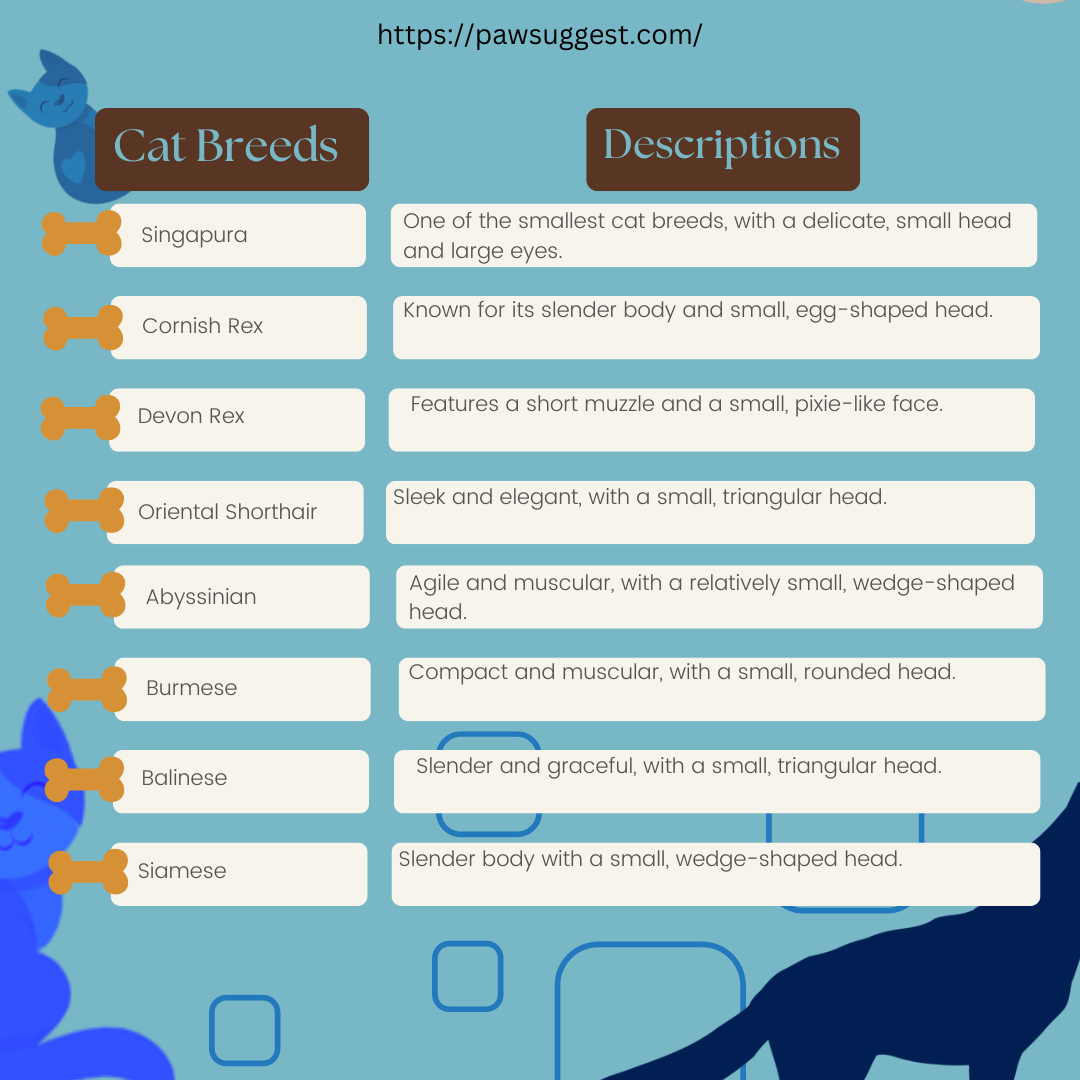Have you ever looked at your cat and pondered:
“Why does my cat have such a small head?”
It’s one of those curiosities that pet owners sometimes find difficult to understand. Cats come in a variety of sizes and shapes, making them a diversified breed.
Some are more delicately built, while some have lion-like heads. Let’s look further and understand why your cat has a smaller head.
Why Does My Cat Have A Small Head?
“Why does my cat have such a small head?” It turns out that this could be the case for a number of reasons. To begin with, heredity is a significant factor. Cats inherit their physical characteristics from their parents, much like people do.
Your cat will likely have a smaller head than its parents did. Cats’ general look can also be influenced by some genes that affect the size and form of their skulls.
Furthermore, your cat’s breed may have a big role. Head size is one of the unique physical traits shared by several cat breeds.
The sleek Siamese cat, for example, is distinguished by its small head and slender body, whereas the Maine Coon has a broader, more muscular cranium.
We’ll discuss the different factors and provide more relevant details in the article below.
Do Cats’ Heads Develop Smaller in Males or Females?
The dimensions of the head and body differ between male and female cats. Because of their larger bodies and weights overall, male cats typically have larger heads than female cats.
This variation can vary between breeds and is more apparent during certain growth stages. Hormones and genetics play a role in the size difference between the heads of male and female cats.

Male cats typically grow larger heads due to the development of wider skulls and heavier facial characteristics. It’s important to remember that each gender has individual variances, and not all male cats will have heads that are noticeably bigger than those of female cats.
It’s also important to take breed features into account while studying cat head sizes. Regardless of gender, some breeds may naturally have larger or smaller heads.
Over time, a cat’s head size and proportions can also be affected by other factors like age, general health, and neutering.
Reasons behind Varying in Head size of Cats
No two cats are exactly the same when it comes to our feline pals, and this includes differences in head size. Here, we examine the numerous causes of the variations in cat head sizes.
➢ Genetics
First and foremost, the size of your cat’s skull is mainly determined by heredity. Cats get their physical characteristics from their parents, much like humans do.
Some breeds, like the Siamese or the Oriental Shorthair, naturally have smaller heads than breeds with larger heads. It includes the Maine Coon or the British Shorthair. Genetics plays a major role!
➢ Age and Development
Like human babies, kittens have proportionately larger bodies than heads. Because their bodies develop more quickly than their heads as they grow, your cat may appear slightly out of proportion for a while.
Don’t worry; most cats eventually grow into their features, and the difference in size between the head and body becomes less obvious.
➢ Health and Nutrition
Nutrition is another important component. Your cat’s total development, particularly the development of its head, depends on a well-balanced diet. Your cat’s growth may be impacted by malnutrition or an imbalance in essential nutrients, which could result in a smaller head.
To support healthy development, make sure your pet eats high-quality cat food that is full of proteins, vitamins, and minerals.
➢ Hormonal Influences
An important factor in a cat’s physical growth is hormones. For example, thyroid hormones are essential for growth. A smaller head might result from an imbalance, especially from an underactive thyroid.
A trip to the veterinarian is recommended to rule out any underlying health concerns if you suspect hormonal abnormalities.
Do neutered cats have smaller heads?
Has your male cat been fixed? This could be one explanation for his smaller head than his colleagues. A cat that has been castrated may experience some physical and behavioral changes.
Your tomcat’s appearance is one physical alteration you might anticipate following his neutering. In particular, his face will be smaller than an intact male’s. A tomcat’s body is designed for combat with other male cats.
Intact males have thicker, larger faces in addition to their powerful physique. Having a thicker and larger face provides safety when battling other male cats. Before your cat hits puberty, get him neutered. He won’t acquire secondary sexual traits, such as thickening of the face or shields that give tomcats rounder faces.
Should your tomcat undergo castration after adolescence and already have facial thickenings, these will gradually disappear.
Cat Breeds With Small Heads
Some cat breeds are smaller in overall size compared to other breeds. And that smaller size is accompanied by a proportionally smaller head.
Among the most popular small cat breeds are:

Frequently Asked Questions(FAQs)
1. What breed of cat has small heads?
The tiniest breed of cat in the world is the Singapura cat. They were bred with Siamese and Burmese in Singapore, where they first appeared.
2. Why is my cat’s head small?
Cats frequently have heads that appear smaller than their bodies. A cat’s breed and genetic makeup are two things that affect how big its head is.
3. Will my kitten’s head grow as it gets older?
Kittens grow at various rates; frequently, their bodies expand more quickly than their heads. Your kitten’s head might eventually catch up as they get older.
Wrap up
At the end of the day, every cat is unique, and variations in physical traits are part of what makes them so special.
A small head is typically nothing to worry about and is often just a part of your cat’s charm. However, staying informed and observant about your cat’s health is always a good practice.
So, cherish your small-headed feline friend and give them all the love and care they deserve!
Related:
Can I Put Vaseline On My Cat Bum?
What If My Cat Licks Silver Sulfadiazine?

